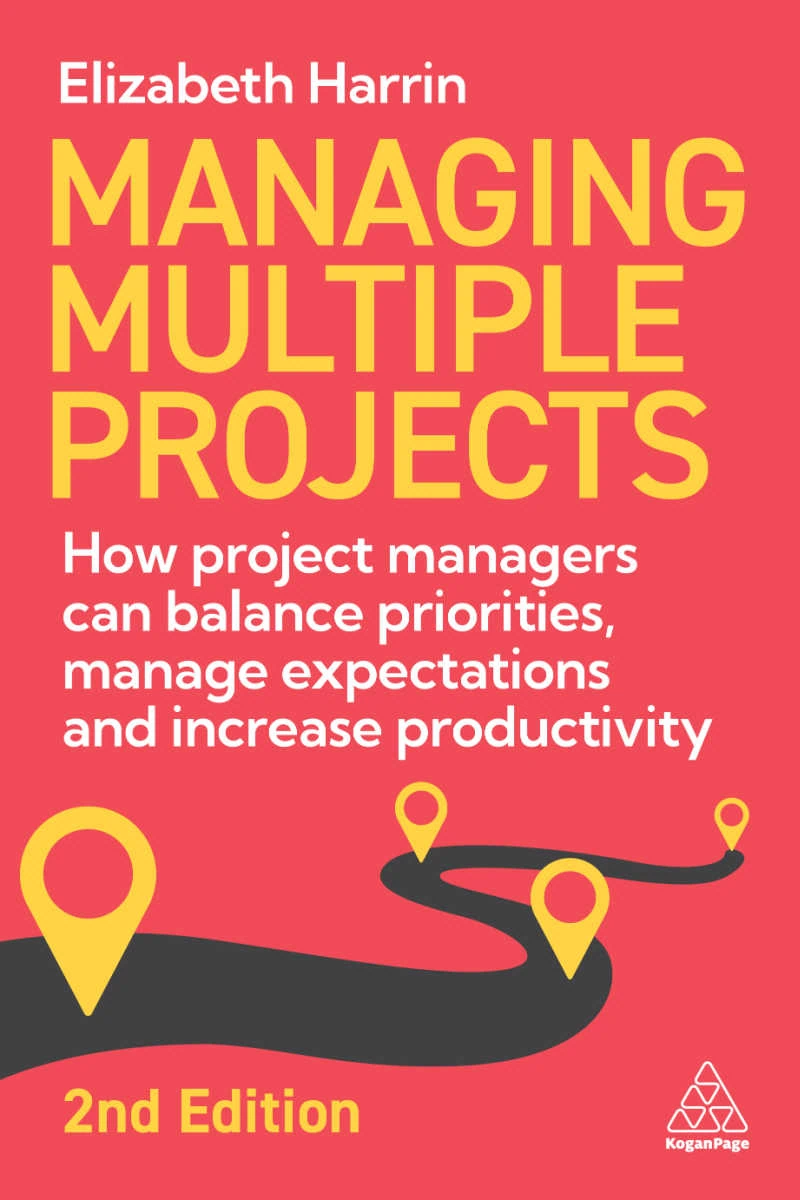How To Decide What Projects To Do
This blog is reader-supported. When you purchase something through an affiliate link on this site, I may earn some coffee money. Thanks! Learn more.
I bet there are not enough resources in your company to Do All The Things. Right? You have a finite amount of money. You have a flexible (but ultimately limited by money) pool of people to do the work. The organization probably has a long list of good ideas and business cases that could turn into projects.
Or, to rephrase, you have a long list of work ideas that senior managers would like to get done as projects.
It’s not difficult to see the problem. You can’t do it all. Not you as an individual, not you as a PMO, not you as a group of dedicated project managers. So how do you decide what projects should go ahead and which ones should go on the backburner for now?
In this article, I’ll share a step-by-step way to prioritizing your projects so all stakeholders understand what projects can move ahead and which ones aren’t going to start now (or ever).
Step 1: Set priorities
First, you need to know what the priorities are. The priority work should align to your corporate strategy.
You’ll probably have some big picture goals, maybe some company values, and a strategy, that have been set by executives responsible for strategic planning. All of these things help set the direction for choosing projects.
However, alone, they aren’t detailed enough to help you put projects in a specific order of priority. You need selection criteria for that.
Step 2: Create project selection criteria
Project selection criteria are the characteristics of the projects you do want to do.
One of them will be ‘strategic fit’ or ‘alignment’ but alone that isn’t enough. Frankly, a canny manager can make anything sound like it has a strategic fit. You need other criteria for selecting whether a project should go ahead.
These can be derivatives of strategic fit, paired with a mixture of other criteria that are appropriate for your business. Here are some suggestions listed below.
Does the project help achieve regulatory compliance? If so, it may be a requirement for your business to do the project, whether it aligns with strategy or not.
What return on investment does the project expect to deliver? Over what time period? Projects with a higher return should get priority. Sometimes time period is important too. Typically, projects that pay back in a shorter period are considered a better investment.
How complex is the project? You may decide to prioritize lower complexity projects at busy times for your business, or at times when you are struggling for resources. Projects that have a major impact need to be assessed for their change management impact.
What strategic goals does the project support? Projects that support more than one strategic goal could be higher priorities than those that only support one.
Is the project essential to remain competitive in the marketplace? Building an online purchasing system isn’t compliance and may not be on your strategy roadmap, but if all your competitors offer the ability to buy online, then you should be prioritizing that too.
Does this project support our environmental and corporate social responsibility goals? There may be good reasons for investing in ethical or green projects throughout the year, for example, if your company has a commitment to spending, say 20% on environmental initiatives.
When will the project finish? If you have too many projects scheduled to go live at the same time, that might be too large a
You can also add other, more practical factors like:
- Is the resource available?
- How will the project be funded?
- How long is the project schedule to be?
- Does the project have an executive sponsor?
- Do we already have some of the project requirements?
- What are the task dependencies and project dependencies? How does this project relate to the others we already have at the moment?
Your PMO should come up with (if they haven’t got it already) a list of the project prioritization categories. Ideally, you should be able to assess the criteria on a numerical basis, so that the “answer” pops out as a single number.
Step 3: Pick the right projects
Armed with your list of business cases (or ideas) and your selection criteria, as a PMO leader or department head you can make informed decisions about what work to take forward.
Hopefully, your selection criteria – when applied to each business case – have given you a clear numerical position for each. Use your business acumen to help make the decision.
Be warned: there is likely to be a lot of discussion around what number each project should be granted for each criteria. When the outcome is that the project possibly won’t get done, the stakes for project sponsors are high.
Deal with this by having a specific process in place for project selection. Perhaps you have a committee that debates and decides how each business case fits with the criteria. Find an approach that everyone can agree on, publicize it (to show you are making the decision in a fair way), and use it.
Take your list of business cases or ideas. Consider the entire project (not only the first phase or whatever time period is covered by the business case). Apply the selection criteria to each idea, marking each business case on its merits, on the ranking scale.
Put the list in order
Then all you have to do is put the list in numerical order. The ideas scoring the highest are at the top of the list – these are your top priority projects. The ideas with mid-ranking numbers fall towards the middle of your priority listing. Everything else falls towards the bottom – we’ll come to those in a moment.
You still have finite resources, so while you have a neatly ordered priority list, you still have to work out what is realistically achievable with your current resources.
You need to agree on this internally. You may opt to do the top 10 projects, or as many projects as you can do until you hit your budget of $x. Or you might apply a bit more analysis and work out how many people hours are required for each project, how many humans you have on the team, and generate a final list from there.
However you do it, you should end up with a list of projects, in priority order, that cuts off at the point you can’t take on any more. When project teams are fully occupied, they are fully occupied. Don’t overload your resources.
Read next: The Ultimate Guide to Resource Management
The good ideas that fall below the cut-off line can sit there until you have more people or more money – as long as nothing else with a higher priority number comes along first.
Tip: Many project management software tools will help you with this. Look for systems with portfolio management capabilities.
Step 4: Say ‘no’ to the wrong projects
By default, the projects that don’t meet your selection criteria are the ones you should not be doing. You can further split the ‘wrong’ projects into two piles:
- Those that you can’t do right now, for whatever reason.
- Those that you shouldn’t do ever.
The time might not be right for a particular project. For example, it doesn’t make sense to recruit a bunch of people when you know that next month an office is closing and you’ll have plenty of skilled resources looking for alternative positions.
Keep those ideas on the list and have a plan to take them forward to the next step when the timing feels better.
One of the biggest prioritization issues is that organizations select the wrong projects. As you work through the selection process it should become apparent which are the initiatives that should never be taken forward and become a project.
They will be the activities that are so far from strategic alignment that you know they couldn’t make sense for your business. They are the ideas that have a scarily high investment for almost zero return (and no other sensible reason to do them either). These are the business cases that get rejected.
Let the proposers know that these ideas will not be taken forward in their current form. Those individuals may be able to rework the business case, tweaking the proposal to become something that isn’t ridiculous. If they can do that, the PMO or prioritization committee should be open to reviewing the proposal again and looking at it with fresh eyes.

Step 5: Repeat
Over a period of time, you’ll collect new ideas for potential projects. Your process for reviewing and approving incoming project ideas need to work on an ongoing basis. Set up regular strategy planning meetings or a committee to look at and approve or reject new ideas.
Doing the right projects means actively deciding not to work on the wrong projects. Increase the chances of delivering a successful project by saying no to the initiatives that will not add value to the organization.
In this article, you’ve learned how to decide what projects to do by setting priorities, creating selection criteria, and prioritizing projects across a portfolio.
There is a lot more we could say about this topic. If it’s something you are struggling with at the moment, book a call with me and we can talk through your challenges and come up with a plan.
Action steps
- If you are not in an environment with a PMO but you are expected to make decisions about incoming ideas that might turn into projects (e.g. as a team leader for a department), start creating a project intake process.
- Find out what the strategy is. When you’re deciding on initiatives and projects that will support strategic objectives, understanding the strategy is a key factor. Get a copy of the strategy document and 5-year plan.
- If you are an individual project manager leading multiple projects, check out my framework for managing multiple projects.
Get your copy
Managing Multiple Projects: How Project Managers Can Balance Priorities, Manage Expectations and Increase Productivity is a book that offers a comprehensive framework for juggling your workload and still leaving the office on time.

